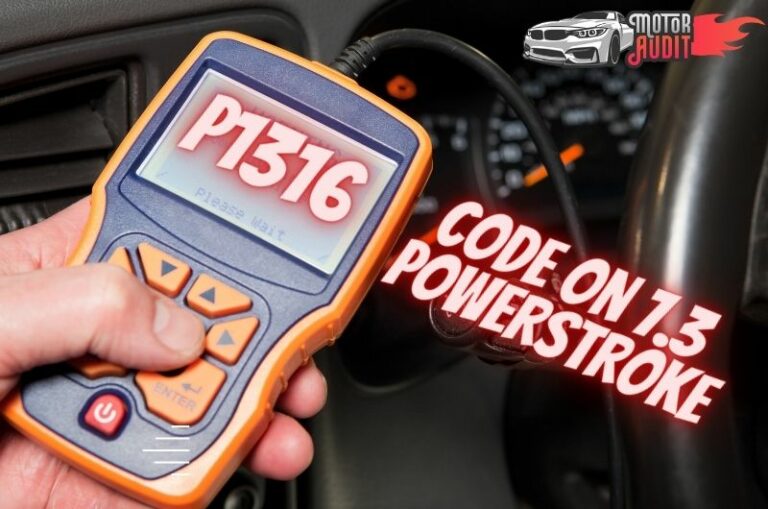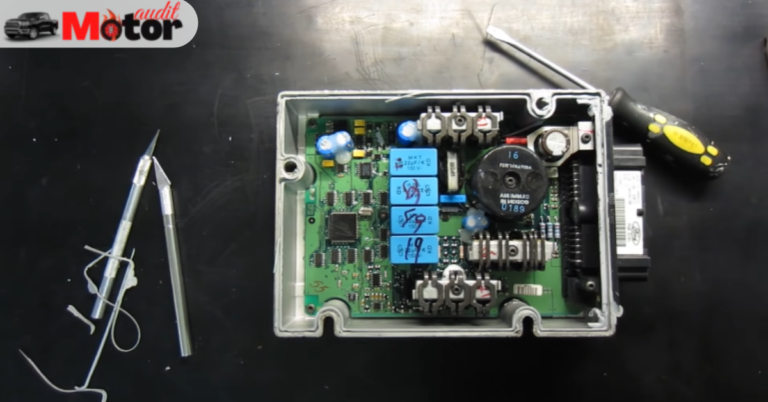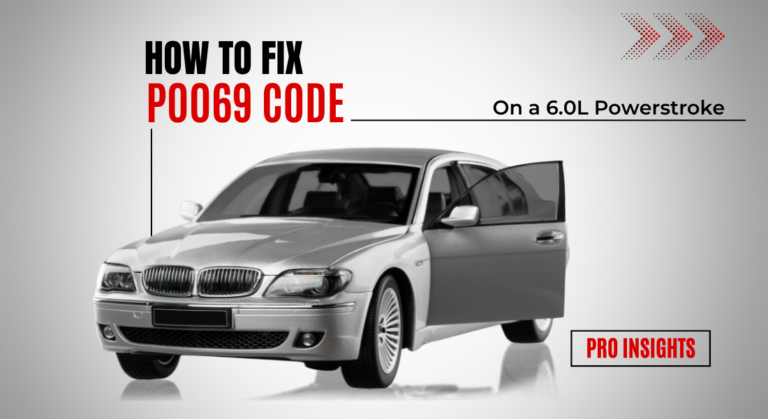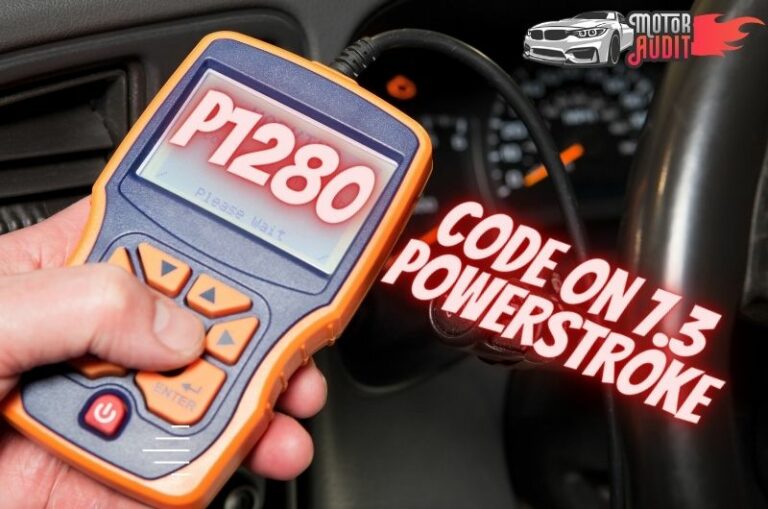Which 6.7 Powerstroke Years to Avoid? (Problems Explained)
The Powerstroke 6.7 engine is unquestionably reliable and durable, especially the third generation of 6.7L. It replaced 6.4 and addressed the majority of the problems with 6.0 and 6.4. Despite this, there are a few issues with early build 6.7, and you should avoid them. Which year models should you avoid?
You should avoid early models of the Powerstroke 6.7, particularly those from 2011, 2012, and 2013. Avoiding the first generation (2011-2014) of Powerstroke 6.7L altogether would be a more sensible choice.
If you’re trying to figure out why you should stay away from early models, keep reading. You will find your answer in the discussion that follows.
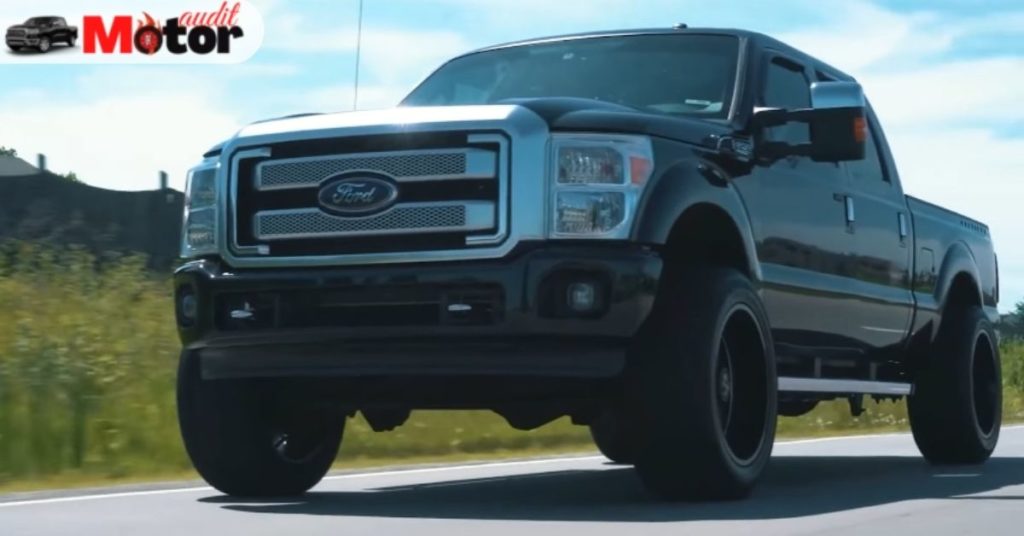
Which 6.7 Powerstroke Years to Avoid?
2011 saw the debut of the Powerstroke 6.7, which replaced the 6.4. It is the first engine that Ford has created independently of longtime collaborator International Navistar. Despite this fact, 6.7 was a success for ford. As we have mentioned, there are a few issues with early build 6.7, and you should avoid them
The three years, 2011, 2012, and 2013, ought to be ranked as the worst Powerstroke 6.7 years. Avoiding the first-generation Powerstroke 6.7L altogether would be a more sensible choice.
The first generation of the 6.7 Powerstroke has a few failure points, unlike the second and third generations. Particularly those from 2011 to 2012.
It is important to note that the majority of 6.7 problems from these model years are isolated incidents and that the second and third generations have largely been trouble-free.
It might be because of adjustments and revision made after 2015 and 2020. Therefore, we advise staying away from 2011 to 1014, and more specifically, 2011 and 2012, if you want to avoid any specific 6.7 model years.
Why should you avoid the 2011 to 2013 6.7 Powerstroke models?
To reiterate, there are common issues with Early built ( 2011-2013) Powerstroke 6.7, so you should avoid 6.7 of these model years. Some of the common issues were very frequent, some were less prevalent. Let’s investigate each of them.
Turbocharger Issues
Early models, especially those from the 2011 and 2012 model years, were fitted with ceramic ball bearings, which is thought to be the primary cause of turbocharger failure in many pickups powered by the 6.7L Power Stroke engine. Later, a steel ball bearing was installed to fix the problem.
Problems with the Radiators
This is yet another issue that plagues the early 2011 model year frequently. The main culprit behind the radiator leak was radiators that were built before 2010 were defective from the factory.
Although the issue has been reported to occur less frequently in later model years, later models eventually develop radiator leaks.
NOx Sensor Failures
It was a common and frequent issue at the beginning of the 2011 model year. Ford launched Custom Satisfaction Program 12B33 in response to sensor failures, and it ran until 2013.
The program’s purpose was to assist customers in upgrading their SCR systems and replacing malfunctioning sensors.
EGT Sensor Issue
There were many EGT sensors included with the Powerstroke 6.7 diesel engine. A problem with the EGT sensor existed in the F series with ambulance packages earlier in 2011 and 2012. It is an essential component.
If it breaks, the driver might have trouble starting the car. Ford recalled the 13S10 to replace the problematic sensor, even though it was a rare occurrence.
Glow Plugs Issue
Another typical problem with the early model year, but one that wasn’t as widespread. According to some complaints and isolated incidents, the glow plug tips may break off into the engine, causing engine failure. Ford found a problem with the factory glow plug and resolved the issue.
What Year Did Ford Put The 6.7 In Trucks?
From the feedback of Ford owners and company information, I came to know that the company was struggling with its 6.0L and 6.4L Powerstroke engines.
Ford was trying hard to solve the issues but failed in some aspects. So, the manufacturer partnered with International Navistar to build their own engine.
After some improvements in the design and production, they successfully built Scorpion 6.7 Powerstroke engine.
And, the engine has been started showing up in the truck since 2011. This variant has got so popular that you can still find them in Ford trucks.
Back then, the engine could deliver up to 390HP and 735 lb.-ft. of torque. Soon after, Ford rolled out an engine update improving the factory tuning.
The upgrade made the same old 6.7L Powerstroke engine capable of providing up to 400HP and 800 lb.-ft. of torque.
Over the years, the engine has become very powerful. In 2011, an F450 DRW could tow up to 24,400 pounds.
But in 2016, the same model has a 5th-wheel tow capacity of up to 31,200 pounds.
Powerstroke 6.7L Generations
Three different Powerstroke 6.7 generations have existed up until this point. We have witnessed ongoing improvements, especially after the first generation. Let’s examine the three generations to determine any flaws and what Ford did to fix them.
- 1st Gen – Ford 6.7 Diesel V8 Years: 2011-2014
- 2nd Gen – PowerStroke 6.7 Years: 2015-2019
- 3rd Gen – Power Stroke 6.7 Years: 2020+
Major 6.7 Powerstroke changes (2011 and the present)?
If you’re a potential buyer, you must be aware of all the upgrades and revisions made to the 6.7L throughout its production. Let’s investigate the changes.
Changes In the 2011 Model Year
Soon after the release, modifications were made to raise the engine’s output to 400 horsepower and 800 pound-feet of torque.
Changes In the 2012 Model Year
- A plastic oil pan was used in place of the steel one.
- The oil cooler stud was removed in order to facilitate repair.
- A second NOx sensor was added.
- Feedlines received an upgrade.
- Rather than using quick-connect fittings, a conventional bolt was employed.
Changes In the 2013 Model Year
This year, a few minor adjustments were made. For the Powertrain control module (PCM) to receive the signal indicating whether the vent hose is connected, a crankcase sensor was installed. Another addition was the installation of a pressure sensor on the diesel particulate filter.
Changes In the 2015 Model Year
This year, there have been many significant changes, one of which was to increase the output from 400 hp to 440 hp.
- Fuel pressure and temperature sensors were combined; in addition, Several sensors, including a particulate matter sensor, and module, were added.
- The EGR cooler was modified, and an EGR sensor was added.
- The fan clutch was updated for improved heat management, and the lower bearing was updated for durability.
- GT37’s single variable geometry turbocharger was replaced by the GT32 twin compressor “DualBoost” turbo.
- Updated lower intake, exhaust braking system, injection pump, and nozzle design injection introduced to reduce the number of bad particles.
- Upgrade the cylinder head, torque converter, and crankshaft damper.
Third generation: Changes in 2020
Ford also significantly modified the 6.7 in 2020, which increased torque and horsepower from 440 to 475. Other changes include the following
- The VGT has been improved.
- The compression ratio has changed as a result of the redesign of the piston.
- Upgrade the cylinder head, connecting rod, and the main bearing.
- Redesigned engine block and improved intake manifold
- higher PSI for the injection
- The 10R140 automatic transmission took the place of the 6R140 TorqShift.
Should You Buy a Used 6.7 Powerstroke?
Of course, if money is tight, purchasing a used Ford Super Duty with a 6.7 Powerstroke engine can be a wise choice. You must take a few things into account, though. First and foremost, which 6.7 model year do you want to buy, and which year should you avoid?
For example, if you want to buy the 2011 model year, it would be considered a bad investment. 6.7 in 2011 has a ceramic bearing issue. It might be a good idea to seek a model after 2015.
In any case, it is a good idea to bring a skilled mechanic who can evaluate the used car’s condition more accurately than you can. Here are some crucial details you need to be aware of before purchasing 6.7L.
- 6.7 must be purchased after 2013.
- Because diesel engines are quite expensive, even routine maintenance like changing the oil costs more.
- A well-maintained engine will perform well.
- The most likely component to fail is the turbo, and preventive maintenance won’t help.
- Diesel fuel costs more than gasoline and will not be offset by increased gas mileage.
- EGR, DPF, and DEF deletion will lead to problems.
What Year 6.7 Powerstroke Is the Best?
Ford tried their best to improve the performance of its 6.7L Powerstroke engine over the years.
After the end of 1st generation of the diesel engine, they emerged with a near-perfect product in 2015. That is the beginning of the second generation.
So, those who are concerned about the engine’s reliability and have enough budget should buy the engine’s 2nd or 3rd generation model.
From 2015 to 2019, it is considered 2nd gen. 2020 and onwards is considered the 3rd generation.
Why They Are the Best?
Let me tell you the improvements Ford made in this engine in the second generation that made them great.
The company introduced IROX coating on the lower main bearing. It helps improve fuel consumption and reduce carbon dioxide emissions. Actually, the coating is responsible for decreasing friction and wear in the bearings.
Ford updated the fan clutch and gave the engine a heavier crankshaft damper. To support more power and torque in the later models, they made turbo updates.
The last improvement was in the EGR cooler flow. Altogether, the new 6.7 Powerstroke engines have become a beast on the road.
Overall, the effort was not only meant for making 6.7 Powerstroke more reliable but also increased power and torque to beat the competition.
FAQs:
By this time, you probably know which Powerstroke 6.7 years to avoid, and the other important topics we covered should have clarified many of your other questions. You might still have questions. These frequently asked questions may be of interest to you.
What is considered high mileage for a 6.7 Powerstroke?
It depends on several other variables. It can provide 30 MPG on the highway, slightly less than the 22 MPG on city streets. It can deliver 25 miles per gallon on average.
Is the 6.7 Powerstroke reliable?
Powerstroke 6.7 is a tough and reliable engine. Except for a few earlier model years, 2011 and 2012, in particular, should be avoided. Purchasing models from years after 2015 is a smart move.
How Long Does A 6.7 Powerstroke Last?
Most probably, the third generation of 6.7 will last long. 6.7 will last longer than 500000 miles with proper maintenance. For a Powerstroke engine, average mileage of over 350000 miles is good.
Is The 6.7 Powerstroke Expensive To Maintain?
We have briefly answered this question earlier in the blog. Like other diesel engines such as Duramax and Cummins, Powerstroke 6.7 is expensive to maintain. Even routine maintenance, like changing the oil, costs more.
What is the average cost of an oil change on a 6.7 Powerstroke?
About 10,000 miles should pass between oil changes. It could vary based on your driving style and road conditions. Oil changes typically cost between $200 and $300, including labor and parts.
Conclusion
There you have it; hopefully, you feel secure and won’t choose the 6.7L Powerstroke from the early 2011 and 2012 Model Years. You should stay away from the first generation of Powerstroke.
Many of the frequently occurring 6.7 issues we’ve listed are isolated incidents, so when buying a used Ford Super Duty, try not to base your decision solely on one or two isolated incidents. Instead, get professional advice.
Diesel engines are more expensive to maintain than gasoline engines but properly maintained diesel engines last longer. Keep it maintained properly to save money on labor and replacement parts.
- Read Also>>Full Guideline To Replace The 7.3 Powerstroke PCM
- Read Also>>Why Does 7.3 Powerstroke Starving For Fuel?(Cause and Fix)
- Read Also>>How to Upgrade and Replace Oil Cooler On 7.3 Powerstroke
- Read Also>>What Are the Benefits of DPF Delete On 6.7 Powerstroke?
- Read Also>>What Is P0284 Code On 6.0 Powerstroke? (How To Fix)

